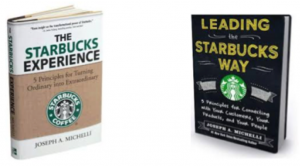Do you want to sound smart?
Then, tell your friends you read a blog this week about how metathesiophobia is bolstered by accomplishment.
In other words, people who are successful often resist change.
Most of us suffer from at least a smidge of metathesiophobia (the fear of change). Certain things can help the condition – like a little setback which prompts us out of our comfort zones to try something different so we might be more effective. By contrast, success can have the opposite effect because people often don’t want to risk their success or brand equity to try something new. The British economic historian, Arnold Toynbee, put it this way, “Nothing fails like success when you rely on it too much.”
Customer Experience Excellence and Driving Change
What does this have to do with customer experience?
In short, business leaders who enjoy success are often reluctant to “mess with the recipe” that got them where they are today. They may become cautious – avoiding not only real risks but hypothetical risks and when they finally realize their livelihood depends on making a change they often overcorrect and take undo risks.
In his book How the Mighty Fall, Jim Collins suggests that success can bring complacency and in fact, he identifies “Hubris Born of Success” as one of the five stages of a business in decline. The other four stages are:
Undisciplined Pursuit of More
Denial of Risk and Peril
Grasping for Salvation
Capitulation to Irrelevance or Death
It’s worthwhile to note – that in Collins’ model of business decline – complacency, excessive pride, a lack of discipline, and risk miscalculations can move once great businesses into irrelevance and extinction.
The Antidote to Fear of Change
So where should you look to push past metathesiophobia and make wise calculated risks – even in the face of current success? The answer is simple and one I apply to many questions I face.
“Listen to and watch overarching consumer behaviors and more importantly become an expert on your core customer segments.”
The more we study our customers, the more we realize that we can’t stay the same and continue to meet their needs. Better yet, the more we understand them, the more we will know about how to change in ways that mitigate risk and enhance our sustainability.
I have been blessed to work with many brands who, during my journey with them, have moved through significantly different phases of their development including:
Emergence
Early Growth
Rapid Growth
Maturity
Reassessment
Leaders at these companies have fought off fears of change irrespective of their current success. It is their willingness to embrace customer-centric change that these companies have propelled their businesses into the next developmental phase.
Whether it’s an emerging brand that adapted from product development success through changes needed to drive sales or a mature brand that morphed from being a market dominator to redefining its value proposition, customer knowledge was at the core of their transition!
Let’s take Starbucks for example. My first book about the company looked at how Starbucks leaders embraced change from rapid growth to maturity (The Starbucks Experience), while the second book (Leading the Starbucks Way) explored how Starbucks drove change as they transitioned from a mature business into a re-evaluative phase. As part of the Starbucks re-evaluation, leaders knew that what brought them success was not enough to secure future success. In keeping with a principle I discussed in Leading the Starbucks Way, Starbucks leaders decided to mobilize the connection they forged in the intimacy of the coffeehouse experience and extended their relationship with customers through technology.

Starbucks paid attention to mobile technology proliferation and their customers’ desire to use their mobile phones to order, pay, etc. As such, Starbucks has been ahead of the curve on many customer innovations like mobile pay or using an in-home assistant like Alexa to place a Starbucks order. Rather than fearing change, Starbucks positions investments for future success by heeding research like that recently cited by Megan Graham in an Ad Age article:
A new study, out today from SAP Hybris — which surveyed 1,000 U.S. consumers who own in-home assistants — found that 17 percent of smart assistant owners used their devices for holiday shopping last year. This year, 38 percent said they would consider using their assistants for holiday shopping. The top reason for using an in-home assistant to purchase gifts is convenience.
Similarly, Starbucks’ recent opening of their largest store in Shanghai (a 30,000-square foot behemoth that is part of their Starbucks Reserve® Roastery concept) integrates technology to – in Starbucks words – be a “fully-immersive, sensorial coffee experience.”
Taking a page from the augmented reality/gamification craze of Pokemon™ Go, Starbucks has integrated augmented reality and gamification into the Shanghai Starbucks Reserve® Roastery. Customers can point their mobile devices around the Shanghai coffeehouse to experience a virtual store tour, track the coffee journey from bean to cup, achieve virtual badges, and unlock exclusive rewards celebrating and acknowledging their store visit to all those in their social network.
The Right Choice for YOU
Digital Assistant ordering, augmented reality, and gamification may or may not be changes that are right for your business. Watching customer behavior can guide you as you explore each and every experience enhancing opportunity.
While little in business is CERTAIN, I am sure that metathesiophobia is not your friend and that change is irrepressible!
So, will you anticipate and drive change in accord with an obsessive commitment to customer listening and understanding? Or will your resistance to change drive your customers away while driving you out of business?

Joseph A. Michelli, Ph.D. is a professional speaker and chief experience officer at The Michelli Experience. A New York Times #1 bestselling author, Dr. Michelli and his team consult with some of the world’s best customer experience companies.
Follow on Twitter: @josephmichelli



